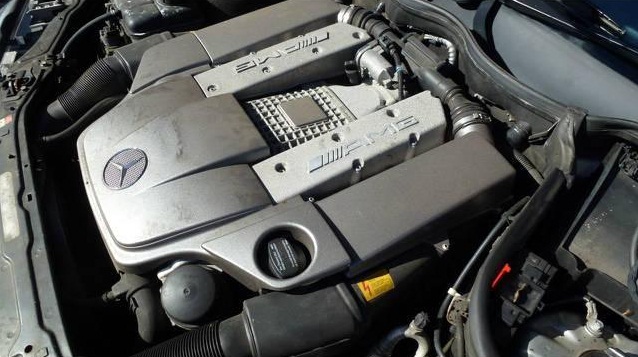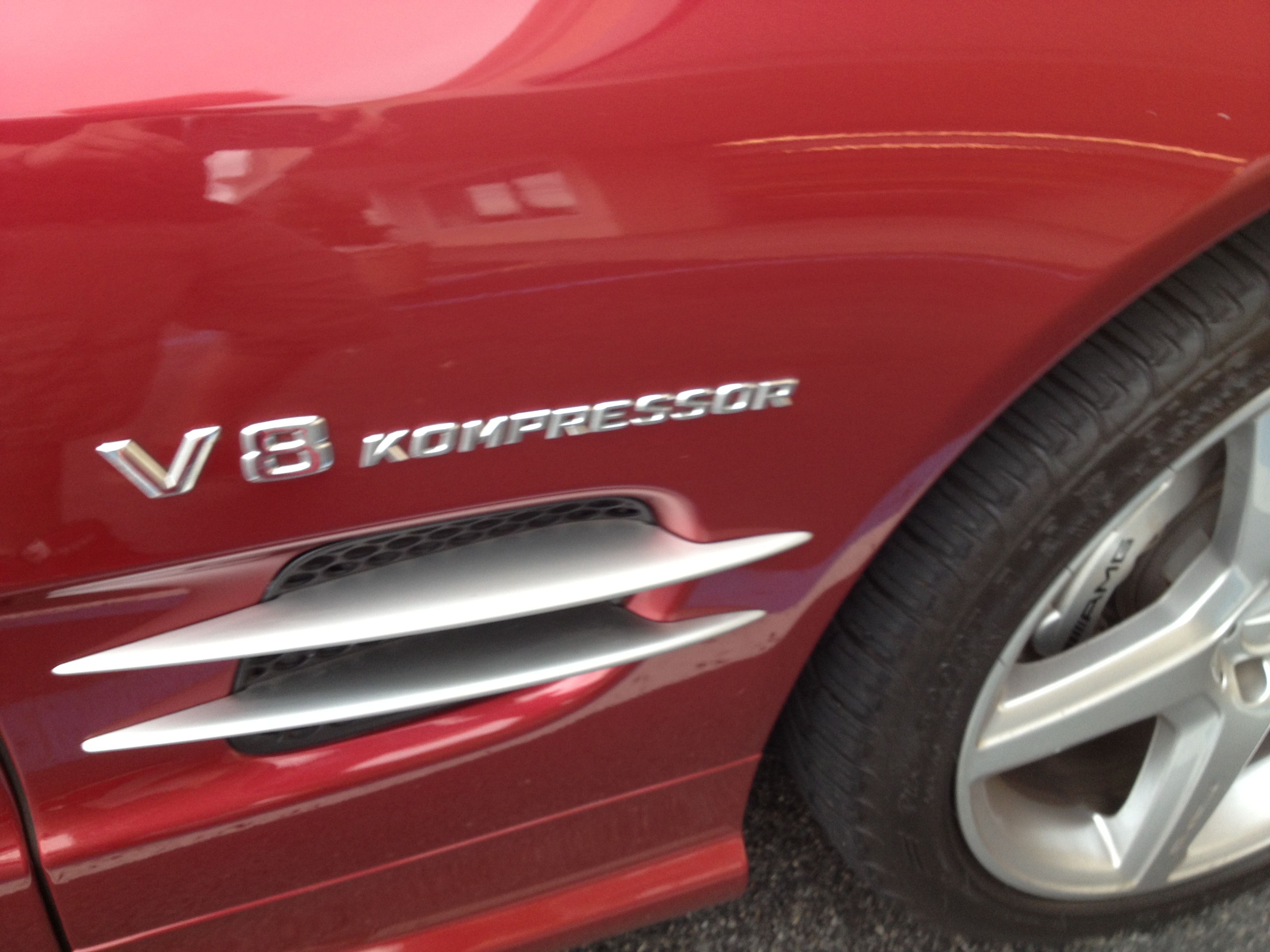|
W202
Mercedes-Benz W202 is the internal designation for a compact sedan/saloon manufactured and marketed by Mercedes-Benz 1993–2000, as the first generation of the C-Class, now in its fifth generation. Replacing the 190 series/W201 in June 1993, the C-Class sedan was Mercedes' entry-level model until 1997, when the company launched the A-Class. Production reached 1,847,382 over model years 1994–2000. Background Development started on a replacement to the 190 series in October 1986, with design work commencing in 1987 under Bruno Sacco. By 1988, the first full-scale models were made, narrowed to two design directions by December 1988. The design by Olivier Boulay was chosen in 1989 and the production design was frozen in January 1990, subsequently patented on 19 December 1990. Rough prototypes went into testing in 1989, with first production design prototypes commencing testing in 1990. Engines The C-Class debuted with a complete lineup of multi-valve engines. The family o ... [...More Info...] [...Related Items...] OR: [Wikipedia] [Google] [Baidu] |
Mercedes-Benz M111 Engine
The M111 engine family is a straight-4 automobile engine from Mercedes-Benz, produced from 1992 to 2003. Debuted in the 1992 Mercedes-Benz E-Class (W124), this engine family is relatively oversquare and uses 4 valves per cylinder. All engines in the family use a cast iron engine block and aluminum alloy cylinder head. M111.920 and M111.921 The M111.920 is a 16 valve engine with bore and stroke of 85.3 mm × 78.7 mm. It produces of power at 5500 rpm and at 4200 rpm. Starting with 1996 it has a variant called the M111.921 which has a MAF (Mass Air Flow)-sensor instead of MAP-sensor on the first one, and using ECU instead of PMS. Applications: * 1993-2000 C180 ( W202) M111.940 The M111.940 is a 16-valve engine with bore and stroke of and compression ratio of 9.6:1. It produces of power and of torque. Applications: * 1992-1995 E200 (W124) * 1997-2002 CLK200 (C208) * 1993-2000 C200 (W202) Unlike the 102, 103, and early 104 series engines, the engine did not ... [...More Info...] [...Related Items...] OR: [Wikipedia] [Google] [Baidu] |
Mercedes-Benz M112 Engine
The Mercedes-Benz M112 engine is a gasoline-fueled, 4-stroke, spark-ignition, internal-combustion automobile piston V6 engine family used in the 2000s. Introduced in 1998, it was the first V6 engine ever built by Mercedes. A short time later the related M113 V8 was introduced. All are built in Bad Cannstatt, Germany except the supercharged C32 AMG, which is assembled in Affalterbach, Germany. All M112 engines have silicon/aluminum (Alusil) engine blocks with a 90° vee angle. The aluminum SOHC cylinder heads have 3 valves per cylinder. All use sequential fuel injection with two spark plugs per cylinder. All have forged steel connecting rods, a one-piece cast camshaft, iron-coated aluminum pistons and a magnesium intake manifold. To deal with the vibration problems of a 90 degree V6, a balancer shaft was installed in the engine block between the cylinder banks. This essentially eliminated first and second order vibration problems (see engine balance). A dual-length Variable ... [...More Info...] [...Related Items...] OR: [Wikipedia] [Google] [Baidu] |
Mercedes-AMG
Mercedes-AMG GmbH, commonly known as AMG, is the high-performance subsidiary of Mercedes-Benz AG. AMG independently hires engineers and contracts with manufacturers to customize Mercedes-Benz AMG vehicles. The company has its headquarters in Affalterbach, Baden-Württemberg, Germany. AMG was originally an independent engineering firm specializing in performance improvements for Mercedes-Benz vehicles. DaimlerChrysler AG took a controlling interest in 1999, then became the sole owner of AMG in 2005. Mercedes-AMG GmbH is now a wholly owned subsidiary of Mercedes-Benz AG, which is in turn owned by the Mercedes-Benz Group. AMG models typically have more aggressive looks, better performance, better handling, better stability and more carbon fibre than their regular Mercedes-Benz counterparts. AMG models are typically the most expensive and highest-performing variant of each Mercedes-Benz class. AMG variants are usually badged with two numerals, as opposed to regular Mercedes-Benz ve ... [...More Info...] [...Related Items...] OR: [Wikipedia] [Google] [Baidu] |
Mercedes-Benz M104 Engine
The Mercedes-Benz M104 is a straight-6 automobile engine produced from 1989 through 1999. It has a double overhead cam design with 4 valves per cylinder, and used a crossflow cylinder head. It replaced the M103 and was replaced by the M112 V6 starting in 1997. The M104 continued in production until 1999 where its last use by Mercedes-Benz was in the W140 chassis. The bore spacing on all M104 engines is the same as M103 engines. 2.8 L M104.900 As Mercedes needed a compact 6-cylinder for their Vito, they agreed with Volkswagen to use their VR6 engine, which they then designated M104.900. An agreement was reached and the engines were sold semi-completed to Mercedes-Benz. This version is unrelated to other engines designated M104. Only the engine cover and aircleaner housing is by Mercedes-Benz. 3.0 L M104.98x This or (2962 cc on Isdera Spyder 036i) 24v was introduced as a sports car resp. top model completing the line-up of M103 12V engines. The M104 featured dual overhead ca ... [...More Info...] [...Related Items...] OR: [Wikipedia] [Google] [Baidu] |
Mercedes-Benz SLK-Class (R170)
The R170 Mercedes-Benz SLK-Class is the first generation of the Mercedes-Benz SLK-Class range of compact luxury roadsters produced by Mercedes-Benz between 1996 and 2004. SLK stands for the company’s design mission to create a ''sportlich'' (sporty), ''leicht'' (light) and ''kurz'' (compact) roadster, and is based on a shortened platform of the W202 Mercedes C-Class. It was replaced by the Mercedes R171 SLK in 2004. Development and launch The R170 Mercedes SLK is based on the SLK I Concept and SLK II Concept, which is a two-seater roadster concept car that features a folding metal electro-hydraulic roof, dubbed 'vario-roof' by Mercedes, and takes 25 seconds to operate. A German design patent was filed on 30 September 1993, with the final production version of the SLK introduced at the Turin Motor Show on 22 April 1996. The R170 SLK is based on the W202 C-Class platform, sharing many drivetrain and chassis components, as well as using a shortened version of the floor ... [...More Info...] [...Related Items...] OR: [Wikipedia] [Google] [Baidu] |
Mercedes-Benz CLK-Class
The Mercedes-Benz CLK-Class is a former series of mid-size or entry-level luxury coupés and convertibles produced by Mercedes-Benz between 1997 and 2010. Although its design and styling was derived from the E-Class, the mechanical underpinnings were based on the smaller C-Class, and was positioned between the Mercedes-Benz SLK-Class and CL-Class. It primarily competes with the two-door BMW 3 and 6 Series, as well as the Audi A4 Cabriolet and the Maserati Coupe and its convertible variant. In 2010, Mercedes moved the CLK-Class designation back to the E-Class, as it had been called previously. First generation (C208/A208; 1997–2003) The first-generation C208/A208 CLK was introduced in 1997, and was based on the W202 Mercedes-Benz C-Class launched three years earlier. The W208 coupé was replaced by the W209 CLK-Class in 2002 (for the 2003 model year), although the convertible remained in production until 2003 when replaced by the C209 CLK. History The CLK introduced a ... [...More Info...] [...Related Items...] OR: [Wikipedia] [Google] [Baidu] |
Mercedes-Benz M106 Engine
The Mercedes-Benz M106 engine is a high-revving, prototype, four-stroke, 2.5-liter, naturally aspirated, V-6 racing engine, designed, developed and produced by Mercedes-Benz for the DTM and later ITC, between 1994 and 1996. History The new M106 six-cylinder replaced the previous four-cylinder engine used in the Mercedes-Benz 190E during the past seasons. It is a brand-new V6 with a displacement of just under 2.5 liters. Very loosely based on the 4.2 liter V8 used in the E 420 and S 420 models, the new engine uses a cylinder bank V-angle of 90 degrees. Equipped with twin overhead camshafts and four valves per cylinder, the compact unit nevertheless only weighed due to extensive use of alloys. Initially producing between , it drives the rear wheels via a six-speed sequential gearbox that was fitted at the rear of the car to improve the weight balance. While Alfa Romeo's model featured four driven wheels, Mercedes-Benz was restricted to only a rear-wheel drive setup for their n ... [...More Info...] [...Related Items...] OR: [Wikipedia] [Google] [Baidu] |
Kompressor (Mercedes-Benz)
Kompressor (stylized as KOMPRESSOR) is a marketing name for forced induction (supercharged) Mercedes-Benz engines. The term is not widely used by other motor manufacturers. The first Mercedes supercharger was developed in 1921 by a Daimler-Benz team with assistance from Ferdinand Porsche. Mercedes became the first manufacturer to install superchargers on some production models. The designation "K" on Mercedes usually means "Kurz", or short, but can mean "Kompressor". Marques with Kompressor option * Mercedes-Benz W202 * Mercedes-Benz W210 * Mercedes-Benz W203 * Mercedes-Benz W204 (2007-2010) * Mercedes-Benz R170 * Mercedes-Benz R171 * Mercedes-Benz C208 * Mercedes-Benz C209 * Mercedes-Benz W211 (E200 and E55 AMG) * Mercedes-Benz W220 (S55 AMG) * Mercedes-Benz C215 (CL55 AMG) * Mercedes-Benz R230 (SL55 AMG) * Mercedes-Benz W219 (CLS55 AMG) Applications 230 1.8L I4 Kompressor In 2002 for the 2003 model year, a new family of supercharged four cylinder engines, dubbed '' M2 ... [...More Info...] [...Related Items...] OR: [Wikipedia] [Google] [Baidu] |
Olivier Boulay
Olivier Boulay (born August 9, 1957, in France) is an automobile designer. Since 2009, he has been the Vice President of Daimler's Advanced Design Centre in Beijing, China."Daimler considering an Advanced Design Center in Beijing" ''Automotive World'', April 06, 2009 He was educated at ''École supérieure d'art graphique et d'architecture intérieure'' in until June 1981, and graduated from the in |
Murat Günak
Murat Günak (born 9 August 1957, Istanbul) is a Turkish car designer and former head designer of Volkswagen and Mercedes-Benz. Career Günak studied design at Hochschule für Bildende Künste (Academy of Fine Arts) in Kassel and then studied at the Royal College of Art in London under Claude Lobo and Patrick Le Quément where he was awarded Master of Automotive Design and was sponsored by Ford. After graduation he worked at Ford in Germany for two years and then moved to Mercedes-Benz for 8 years. Gunak moved to Peugeot to become Head of Design in 1994 and then returned to Mercedes-Benz and DaimlerChrysler in 1998 as Vice President for all passenger cars. He joined the Volkswagen brand as Head of Design in April 2003 and took over as Head of Design of the Volkswagen Group on 1 January 2004, responsible for the design activities of all brands in the Group. He was replaced at Volkswagen by his former employee, Walter de'Silva in 2007. Through his consultant company ''MGMO GmbH' ... [...More Info...] [...Related Items...] OR: [Wikipedia] [Google] [Baidu] |
D-segment
The D-segment is the 4th category of the European segments for passenger cars, and is described as "large cars". It is equivalent to the Euro NCAP "large family car" size class, and the present-day definition of the mid-size car category used in North America. Compact executive cars are part of the D-segment size category. D-segment sales represent approx. 7% of the market in 2010s. Characteristics Most D-segment cars are sedans/saloons or wagons/estates but hatchbacks, and coupes have been common. Pricing and specification of D-segment cars can vary greatly, from basic low-cost transport to more luxurious and expensive models. Current models In 2020 the fifteen highest selling D-segment cars in Europe were the BMW 3 Series, Volkswagen Passat, Tesla Model 3, Mercedes-Benz C-Class, Audi A4/S4/RS4, Škoda Superb, Volvo S60/V60, Peugeot 508, Audi A5/S5/RS5, Ford Mondeo, Opel/Vauxhall Insignia, BMW 4 Series, Volkswagen Arteon, Toyota Camry and Polestar 2. 100.000 ... [...More Info...] [...Related Items...] OR: [Wikipedia] [Google] [Baidu] |
_front.jpg)


.jpg)

